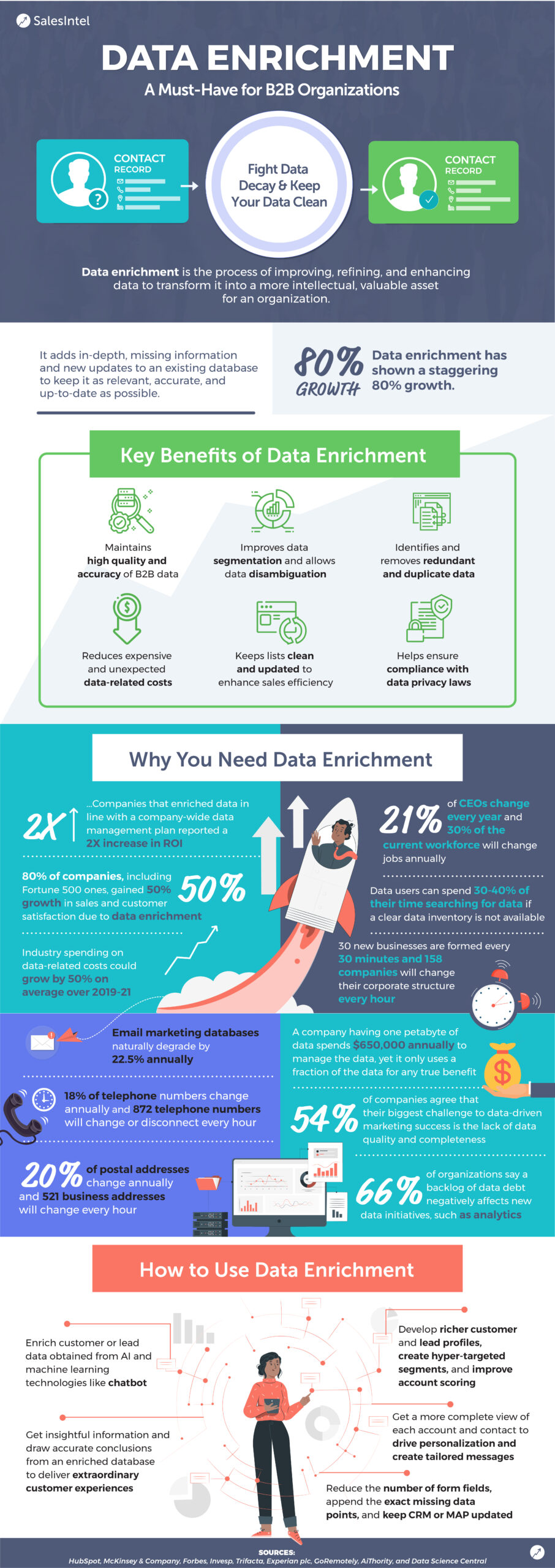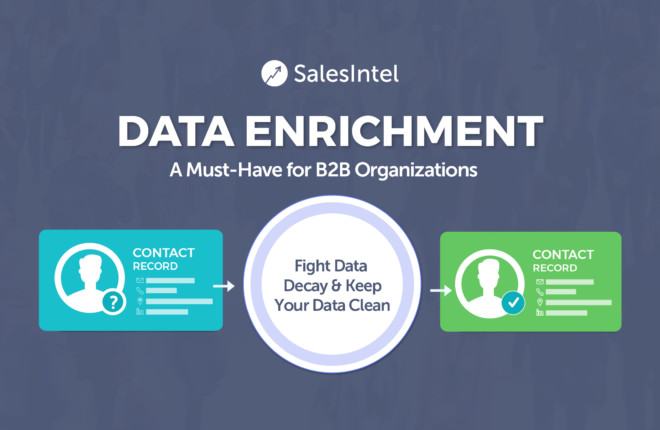Data enrichment is the key to achieving B2B success in the current data-driven, fast-paced sales, and marketing landscape. Data enrichment is the use of processes and tools to enhance data quality. It makes your data easy to understand, actionable, insightful, useful, and valuable.
Data enrichment involves bringing together first-party, internal data and third-party, external data to build more robust, richer profiles for new and existing customers and prospects. It works great if you have incomplete or inaccurate data and need to fill in the gaps in your database. It’s also an effective solution to other problems like having data that lacks credibility or comes from unreliable sources.
Data enrichment helps improve data integrity, which refers to the overall consistency, completeness, accuracy, and safety of data. There are several use cases of data enrichment, among which are shorter lead capture forms.
With data enrichment, marketers can take the liberty of creating shorter web forms without worrying about losing the information required to generate leads or score them. At the same time, data enrichment will allow your marketers to eliminate the risk of turning away leads by asking them as little as possible on lead forms.
Data enrichment enables your sales and marketing teams to work with high-quality, clean data. This helps improve customer experiences, determine to upsell opportunities, and better decide the lead quality.
Contact data enrichment has become an essential need for B2B organizations. Data is being generated at breakneck speed and in mammoth quantities. Moreover, the critical requirement of maintaining data integrity is becoming more challenging. Regular and timely data enrichment is one of the effective steps your business can take to best leverage B2B data.
The detailed, statistical infographic presented here offers quick knowledge of data enrichment and its importance in the B2B world.





